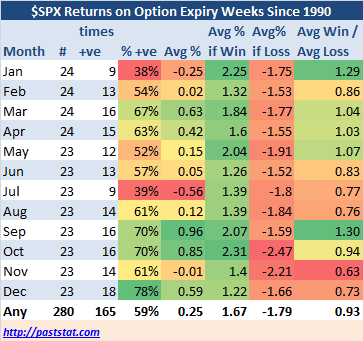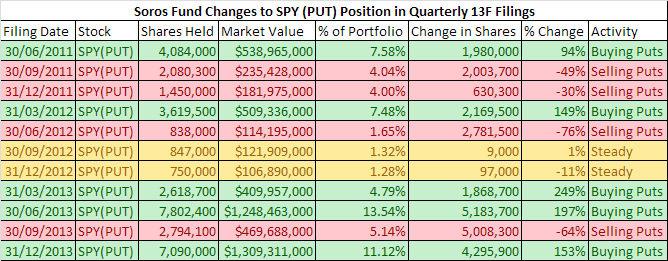SPX and SPY Options Blog
Post on: 8 Май, 2015 No Comment

December 27, 2012
Getting Familiar With Settlement
One infrequently discussed topic important to understand in becoming familiar with the mechanics of learning to trade options is that of the various settlement issues. Many option traders limit their universe of option trading to two broad categories of underlyings. One group consists of individual equity issues and the similar group of exchange traded funds (ETF). The other group is composed of the various broad based index products. These two groups are not entirely mutually exclusive since a number of very similar products exist in both categories, for example the broad based SPX index and its corresponding ETF, the SPY.
The first category, the individual equities and ETFs, trade until the close of market on the third Friday of each month for the monthly series contracts. These days there are many ETFs and equities that also have weekly settlements too. These contracts are of American type and as such can be exercised by the owner of the contracts for any reason whatsoever at any time until their expiration. If the contract is in-the-money at expiration by just one cent, clearing firms will also exercise these automatically for the owners unless specifically instructed not to do so. The settlement price against which these decisions are made is the price of the underlying at the close of the life of the option contract.
When this first group we are discussing settles, it is by the act of buying or selling shares of the underlying equity/ETF at the particular strike price. As such, the trader owning a long call will acquire a long position in the underlying and the owner of a put a short position. Conversely, the trader short these options will incur the offsetting action in his account. Obviously, existing additional positions in the equity/ETF itself may result in different final net positions.
The second category, the broad based index underlyings, are also termed “cash settled index options”. This category would include a number of indices, for example RUT and SPX. As the name implies, these series settle by movement of cash into and out of the trader’s account. The last day to trade these options is the Thursday before the third Friday; they settle at prices determined during that Friday morning. Like ETFs and equities, these index options also have weekly settlements as well.
One critically important fact with which the trader needs to be familiar with is the unusual method of determining the settlement price of many of the underlyings; it is NOT the same as settlement described above. Settlement for this category of underlyings has the following two characteristics important for the trader to understand: 1.The settlement value is a calculated value published by the exchange and is determined from a calculation of the Friday opening prices of the various individual equities, and 2. This value has no obligate relationship to the Thursday closing value for the underlying.
Many option traders choose never to allow settlement for the options they hold, either long or short. For those who do allow positions to settle, careful evaluation of the potential impact on capital requirements of the account must be a routinely monitored to avoid unpleasant or mysterious surprises.
John Kmiecik
Senior Options Instructor
June 14, 2012
What Will You Settle For?
One infrequently discussed topic important to understand in becoming familiar with the mechanics of learning to trade options is that of the various settlement mechanisms. Most traders confine the universe of their option trading to two broad categories of underlyings. One group consists of individual equity issues and the similar group of exchange traded funds (ETF). The other group is composed of the various broad based index products. These two groups are not entirely mutually exclusive since a number of very similar products exist in both categories, for example the broad based SPX index and its corresponding ETF, the SPY.

The first category, the individual equities and ETFs, trade until the close of market on the third Friday of each month for the monthly series contracts. These contracts are of American type and as such can be exercised by the owner of the contracts for any reason whatsoever at any time until their expiration. If the contract is in-the-money at expiration by just one cent, clearing firms will also exercise these automatically for the owners unless specifically instructed not to do so. The settlement price against which these decisions are made is the price of the underlying at the final bell of the life of the option contract.
When this first group we are discussing settles, it is by the act of buying or selling shares of the underlying equity/ETF at the particular strike price. As such, the trader owning a long call will acquire a long position in the underlying and the owner of a put a short position. Conversely, the trader short these options will incur the offsetting action in his account. Obviously, existing additional positions in the equity/ETF itself may result in different final net positions.
The second category, the broad based index underlyings, are also termed “cash settled index options”. This category would include a number of indices, for example RUT and SPX. As the name implies, these series settle by movement of cash into and out of the trader’s account. The last day to trade these options is the Thursday before the third Friday; they settle at prices determined during that Friday morning.
One critically important nuance with which the trader needs to be intimately conversant is the unusual method of determining the settlement price of many of the underlyings; it is NOT the same as settlement described above. Settlement for this category of underlyings has the following two characteristics important for the trader to understand: 1.The settlement value is a calculated value published by the exchange and is determined from a calculation of the Friday opening prices of the various individual equities, and 2. This value has no obligate relationship to the Thursday closing value for the underlying.
Many option traders choose never to allow settlement for the options they hold, either long or short. For those who do allow positions to settle, careful evaluation of the potential impact on capital requirements of the account must be a routinely monitored to avoid unpleasant surprises.
Edited by John Kmiecik
Senior Options Instructor














